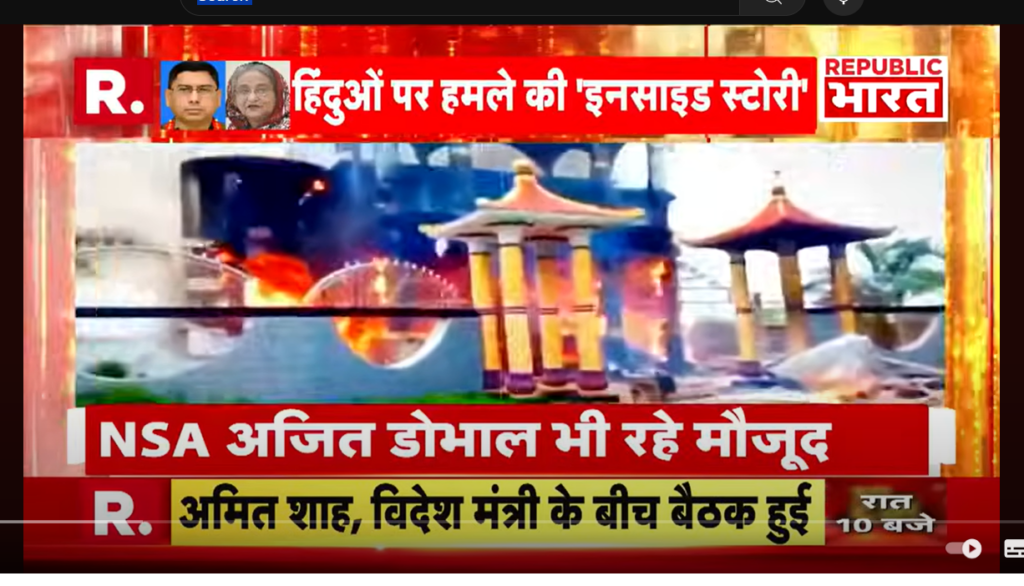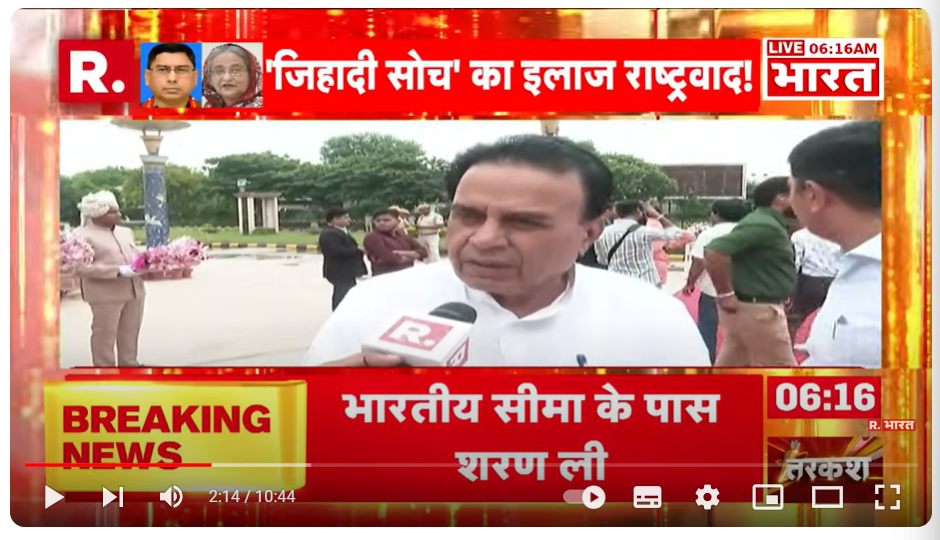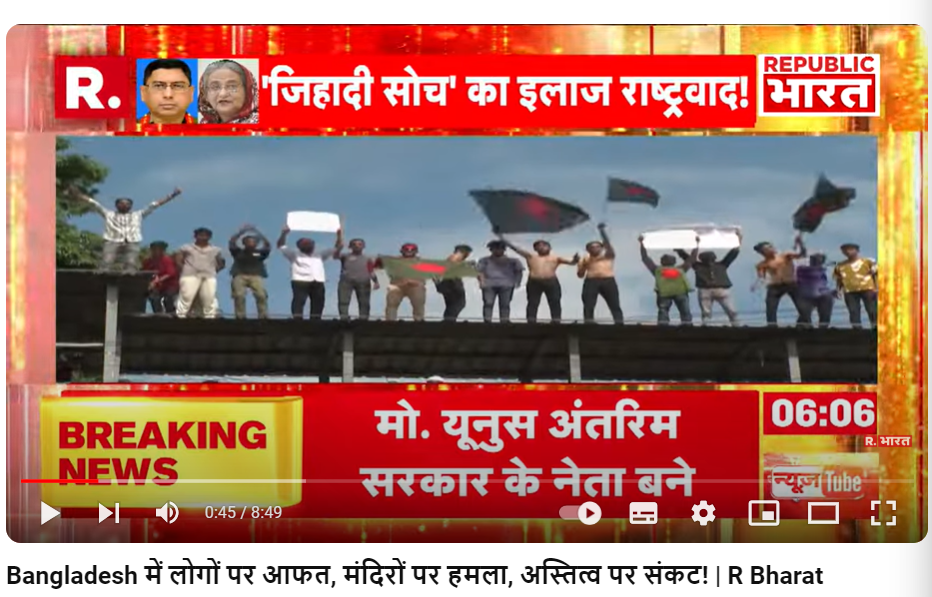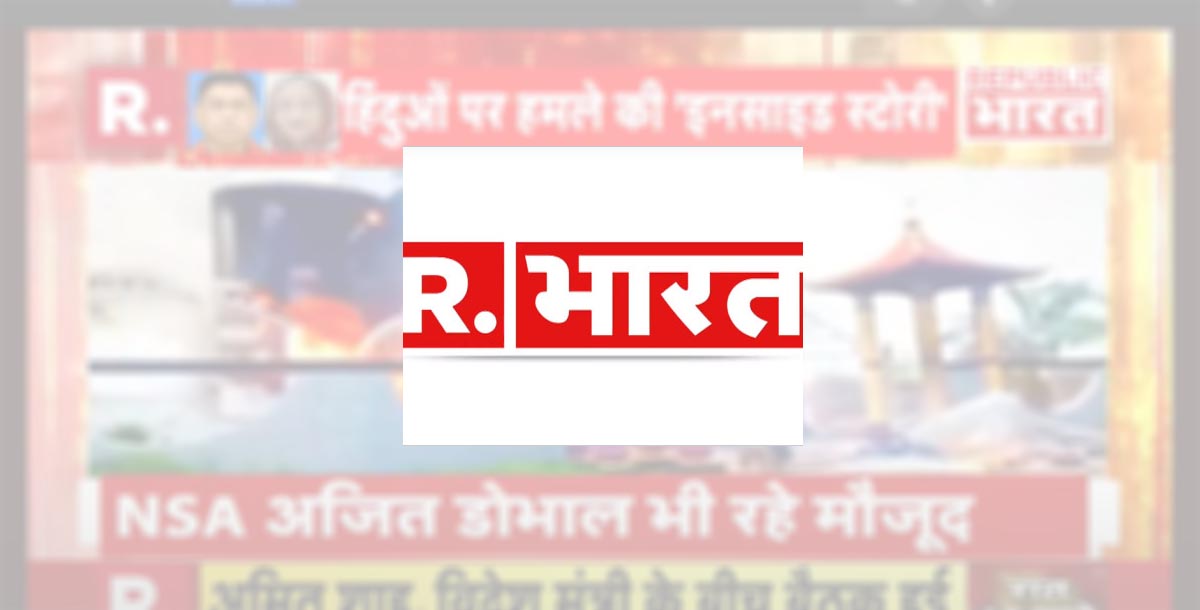On August 5, significant changes took place in the neighbouring country of Bangladesh with the Bangladeshi ex-Prime Minister Sheikh Hasina resigning and fleeing the country on the account of the mass protests. The ex-prime minister had left the Bangladeshi capital Dhaka on a helicopter with her sister, and landed at Hindon Air Base in Uttar Pradesh’s Ghaziabad in a C-130 transport aircraft on August 5 itself. On August 7, it was announced that Bangladesh’s Nobel laureate Muhammad Yunus will head the country’s interim government.
With the ouster of Hasina, news of protesters taking over the residence of ex-PM emerged, with videos of the protestors taking away stuff from Hasina’s official residence. Even though a statement was made by Army chief Waker uz Zaman, stating that law-and-order will be maintained in the country and action will be taken against offenders, situations soon turned volatile. Adding fuel to the fire were unsubstantiated reports of minority Hindus in Bangladesh being attacked by the majority population of Bangladesh. Within hours of the reports of Hasina leaving the country, false narratives of Bangladeshi Hindus facing attacks, their houses being demolished and Hindu temples being vandalised emerged on social media.
It is crucial to highlight here that the coordinators of the Anti-Discrimination Student Movement, which had led the protest demanding the resignation of Hasina, had also appealed to protect Hindu population in Bangladesh. On August 8, 2024, Dr Mohammed Yunus, after taking charge of the interim government in Bangladesh delivered his first address and said “if you trust me to run your country, the first thing you need to do is to stop attacking the people and the minorities around you. If you don’t, I have no use and it’s better I leave”.
As pictures unrelated to Bangladesh and old videos started surfacing and circulating on social media, many took to busting these false exaggerated claims being made with the objective of given a communal colour to the situation of Bangladesh and create an unrest in India between the Hindu and Muslim community. To counter the hysteria being spread by the right-wing groups on social media, pictures of Muslims in Bangladesh standing vigil in front of Hindu temples also emerged on social media. (A detailed report can be viewed here.) Adding to this chaos of false news and misinformation being spread stands Republic TV, which has been creating confusion and mixing information and misinformation. In the past as well, Republic TV has been criticised, even by the Courts, for their “derogatory” manner of reporting on news. In January 2021, a Division Bench comprising Chief Justice Dipankar Dutta and Justice GS Kulkarni of the Bombay High Court had held that the media coverage by Republic TV and Times Now against Mumbai police in the case pertaining to death of late actor Sushant Singh Rajput to be prima facie contemptuous
Reports on the actual attacks on minorities in Bangladesh till now:
However, it is pertinent to highlight that The Daily Star has reported a few attacks on minorities till now. As per the report of the The Daily Star, in Dhaka’s Dhanmondi, the home of band Joler Gaan’s frontman Rahul Ananda was set on fire and burnt to the ground on Monday.
“As soon as they broke down the gate, they started ravaging the house, taking whatever they could find for themselves. They took everything — from furniture and mirrors to valuables. After that, they torched the whole house along with Rahul da’s musical instruments,” a close family source of Rahul had reportedly told The Daily Star. Notably, Rahul and his family had managed to flee to safety and were not attacked. The report also provided that on the same day, the Dhanuka Manasa Bari temple in Shariatpur was ransacked by an angry mob. it has been reported that the mob crushed the idols of Radha-Krishna and razed the temple to the ground. They also damaged all 16 CCTV cameras installed inside the temple premises.
According to The Dhaka Tribune, the warehouse of Babul Saha, chairman of Narikelbaria in Bhagarpara, Jessore, was attacked and looted, along with 22 shops belonging to the local Hindu community. Several homes were also vandalized and plundered during the incident, which occurred on Monday night. The area is home to at least 200 Hindu families, and locals reported that residents are now guarding their homes at night. During a visit on Wednesday, it was observed that Gobinda Saha, a local resident, was cleaning up broken window panes in front of his house, which had been damaged during the attack. He recounted that around 20-25 assailants, armed with machetes and sticks, had stormed their homes around 9:30 p.m. on Monday.
Details of the attacks can be read here.
How Republic TV reported attacks on minorities in Bangladesh:
Before beginning with this, it is essential to note that at least two of the videos shared by Republic TV, namely “Bangladesh Protest: Banaras Hindu University में पढ़ रहे छात्रों ने बताई खौफनाक” (https://www.youtube.com/watch?v=TcEu3gw83h4 ) and “बांग्लादेश में हिंसा की भेंट चढ़े हिंदू मंदिर हुई तोड़फोड़ | Bangladesh Hindu Mandir Attack” (https://www.youtube.com/watch?v=YiXdoawPofY ) have been made private. The said video had some nasty unsubstantiated comments.
In another video, namely “Bangladesh में कट्टरपंथियों का निशाना बने हिंदू! | R Bharat Bangladesh में कट्टरपंथियों का निशाना बने हिंदू! | R Bharat”, Republic Bharat has made big claims about how the whole Hindu population in Bangladesh is at the target of the public at large in the country. However, their report on the properties of Hindus being destroyed is intertwined with false news.
One of the clippings from the report of the Hindu properties being burnt showed the following temple being burnt by mobs.

It is essential to note that Mohammad Zubair, a fact checker and the co-founder of AltNews, had highlighted that the visual that are being passed as the burning of a Hindu temple is, in fact, a restaurant being burnt by the protestors in Bangladesh. While the reporter herself stated that there is an increasing anger in the Hindus of India in regards to the targeting of Hindus of Bangladesh, Republic TV themselves went on to spread fake and unverified news. To do so after knowing that the activities of the neighbouring will have on the public order and harmony of India is reckless to say the least. In addition to spreading misinformation and panic in regards to the situation in Bangladesh, the report used derogatory words such a “jihadi” for the Muslims of Bangladesh multiple times throughout the video. Instigating tickers containing the word ‘Jihadi’ were also a part of the programme.

It is essential to note that the report even claimed that the Muslims in Bangladesh were trying to burn Hindus alive there. While the on-ground situation of Bangladesh remains unclear, creating panic by making exaggerated speeches and creating chaos is violative of the duties that media and digital news is supposed to abide by. A few examples of instigating tickers is below:


The video can be viewed here: https://www.youtube.com/watch?v=cmjbQMzUedI
In the other programme, which was titled “Bangladesh में लोगों पर आफत, मंदिरों पर हमला, अस्तित्व पर संकट! | R Bharat” also had a similar coverage, wherein derogatory words such as ‘Jihadi’ were used repeatedly.

A few examples of instigating tickers are as follows:

The video can be viewed here: https://www.youtube.com/watch?v=ylvW0pF9EDE
Guidelines of the court on media coverage and the role and conduct of the anchors:
The Bombay High Court had, in the case of Nilesh Navalakha and ors vs Union of India and ors. [PIL (ST) No. 92252 of 2020], had touched upon the issue of media trials being run by certain TV channels in the name of “investigative journalism” and the role that electronic media played in derogation of characters of those being investigated by police and courts in the Sushant Singh Rajput case. The High Court bench led by the then Chief Justice Dipankar Dutta and comprising of Justice Girish Kulkarni had admonished media houses of indulging in such a media trial while reiterating the role of statutory authorities under the Cable Television Networks Act and directed them to take necessary action in complaints received by them.
The 251-page judgment of the Bombay High Court, a constitutional court, is now the most recent jurisprudential marker on established standards for media publications, electronic media and networks when they report ongoing investigations and legal proceedings. While laying down several norms specifying the conduct that needs to be followed by anchors during debates and programmes, the Court had stated that the right to freedom of speech and expression like all other rights in the Constitution is also not absolute; it is subject to imposition of reasonable restrictions. The court also emphasised upon the role that media plays in moulding the opinion of the common person in India, making it all the more essential for them to abide by the rules of responsibility, neutrality and impartiality in their reporting.
The details on the judgment can be read here.
Related:
Lessons from a ‘Democratic Revolt’: Prevent the slide into majoritarianism
Redefining Indian Tradition Minus Christianity & Islam is Intellectual Dishonesty
Bangladesh Situation Tumultuous, But Does Not Signify Islamic Extremist Dominance
